Invisalign Treatment for You and Your Child
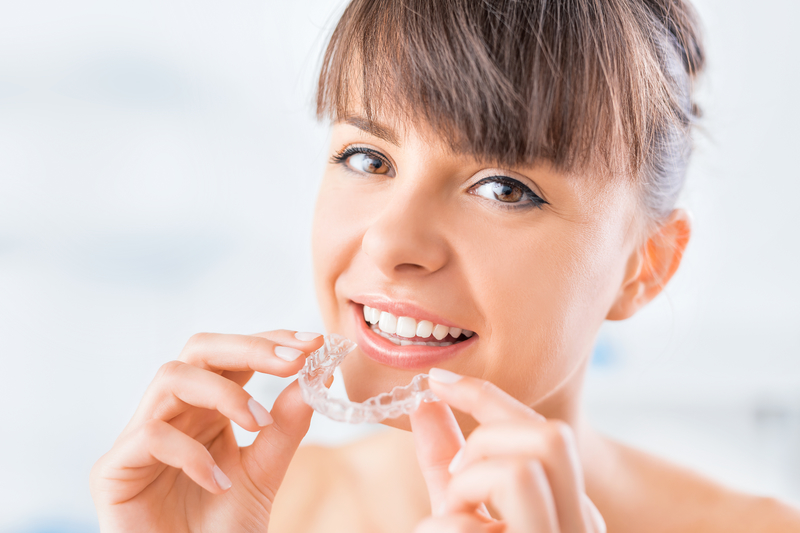
Many people think of traditional metal brackets when they picture braces in their mind. However, these are not the only type of braces available to patients. Lingual braces and ceramic braces also exist, but one of our favorite options is Invisalign treatment. Named for the invisible aligners that help shift your teeth, Invisalign is the perfect treatment option for adults and teens who want to straighten their teeth more discreetly. Find out how these aligners are custom-designed for each patient, what your treatment will look like and how you can benefit from choosing Invisalign!
What Is Invisalign?
In the past, metal braces were the only option people had to straighten their teeth. Decades ago, these metal braces even came with large headgear and lengthy treatment. Technology continues to advance each year, and now you have better (and much more discreet) options for straightening your teeth. Invisalign is one such option for patients who want straight teeth, but don’t want metal brackets for 18-24 months to achieve that smile. Invisalign is the same type of treatment, but instead of brackets, you get transparent aligners that go in your mouth much like retainers. Advantages of this orthodontic option include:
- Virtual invisibility because the aligners are transparent.
- You can remove the aligners whenever you need to, especially for eating, drinking, brushing and flossing.
- Cleaning the aligners are much easier than cleaning brackets and wires.
- Less office visits are typically needed for patients.
- Total time for optimal results is generally shorter than metal braces.
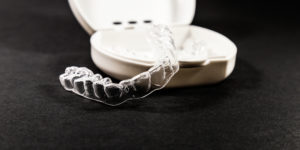
How Does It Work?
Your Invisalign treatment will be much different than traditional metal braces would be. However, Invisalign treatment is much easier than metal braces. Dr. Hardy will take an impression of your teeth using a special 3D imaging machine called an iTero Element Scanner. This will digitally record all the grooves and shapes of your current teeth without any sticky molds. Then, your aligners will be custom-made for you that you will take home with you and switch out every 2-3 weeks. Every person’s gumline is different, so the digital impressions of your teeth is an important part of the Invisalign creation process. Once your aligners are made, we trim them to fit your gum line. A custom-fit means that your aligners will fit so snug against your teeth that they will almost seem invisible.
Your treatment plan will be made based off of the current shape of your teeth and if you have any bite and alignment issues. We will be able to tell if any of these issues are present during your consultation. Once your treatment plan is made, you will wear your aligners between 20-22 hours a day for 18-24 months. The treatment time is similar to what metal braces or other orthodontic options would be. On average, our patients need 18-30 aligners for a period of 9-15 months to achieve their desired outcome.
Can Children Use Invisalign?
Some children will be candidates for Invisalign treatment, whereas others will not be. Often, child orthodontics is needed to correct bite and alignment problems that are severe in children. These problems include overbite, underbite, crossbite and other problems with a misaligned bite and jaw. Some problems are severe enough that children will require metal or ceramic braces to fix the problem. Invisalign treatment can correct some bite and alignment issues, but not if they are severe. A severe problem may make your child unable to use Invisalign aligners until they receive orthodontic treatment for teeth straightening as a teenager.
There is also the problem of the aligners being removable. Since they are clear, they are easily lost, which parents don’t want. If your child is fairly young, metal braces might be the smartest choice for them so they don’t lose the aligners. Dr. Hardy can assess your child’s oral health to see if they are candidates for Invisalign treatment or if they need other orthodontic appliances.
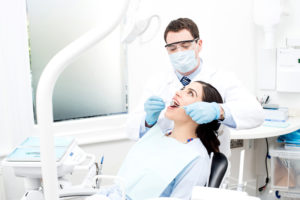
Invisalign Teen
For many teens, they don’t want metal braces that are very visible to everyone. Metal appliances can also make eating, speaking and maintaining clean teeth challenging. Many teenagers are also self-conscious about braces and their appearance, which generally brings less smiles and confidence. The invisibility of Invisalign Teen is why it’s so popular with this age group. Invisalign Teen is simply Invisalign treatment made with teenagers in mind. For teens who play sports, they can remove their aligners in order to wear mouth guards or to play musical instruments.
Why Should I Choose Invisalign?
Do you want straighter teeth? Do you want to straighten your teeth without everyone knowing? Would you like to avoid all the work that goes into cleaning brackets with metal braces? Then Invisalign treatment is for you! Invisalign aligners are fit to your mouth, comfortable and transparent. You can remove them as you need to and cleaning is very easy, especially for children and teens. If you want a beautiful smile while you receive orthodontic treatment, ask our office about receiving Invisalign treatment for you and your child. Call Belmar Orthodontics today at (303) 225-9016 for your free consultation!
Foods and Drinks that Hurt Your Teeth

Braces is an amazing time to get a straighter, more beautiful smile. However, wearing braces on your teeth make them much harder to clean than they were before. This is especially true when it comes to certain foods and drinks. We have a list of foods that you should avoid during your orthodontic treatment because those foods stick to the teeth. You never want food to stay stuck in your braces, as this leads to tooth decay and demineralization. We can help you to know what foods and drinks to stay away from during your orthodontic treatment. We can also help you to know how to properly clean your teeth so you don’t have to worry about tooth decay as your teeth get straighter. Avoid foods and drinks that hurt your teeth so you can have a beautiful smile once those braces come off!
Foods to Avoid
Braces bring many changes for 18-24 months. One of those is avoiding foods that could hurt your teeth. Hard foods, sticky foods and foods high in sugar should be avoided. Eating foods high in sugar increases your risk of cavities, which you want to avoid. Also avoid:
- Hard candy
- Chips
- Ice
- Apples
- Crusty bread
- Nuts
- Popcorn
- Corn on the cob
- Carrots or other hard vegetables
- Gum (this is a big one)
- Caramel
- Sugar Daddies and similar candies
- Skittles
- Tootsie Rolls
- Starburst
- Licorice
- All types of taffy
You will also want to avoid carbonated and sugary drinks. Sugary drinks also increase your risk for tooth decay, and the last thing you want with braces are cavities. Carbonated drinks contain carbonic acid, which erodes your tooth enamel and can lead to demineralization. If your teeth demineralize, they become weaker and could even have spots where they simply erode away. Limit your citric fruits (like oranges or lemons) as well as citric drinks, as these also contain acids that will hurt your teeth and erode them.
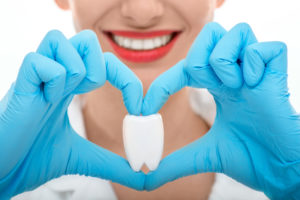
Why to Avoid These Foods
We can give you lists of foods to avoid, but it’s also best to explain why you should avoid these types of foods.
- Hard Foods – Your teeth and even you braces appliances are very hard, however, they are not unbreakable. Even without braces, you want to be careful about eating hard foods, as you could break a tooth. With braces, you could break a bracket or wire or have it come right off the tooth, which is something you don’t want. The hard candies and foods we have listed on foods to avoid are ones that we have seen hurt your teeth time and again. If you must eat hard foods (or if you really want to), cut up foods such as apples into small, bite-sized pieces. However, you should avoid nuts and popcorn hulls at all costs, as there really is no good way around eating these without the chance that you could hurt your teeth or brackets. Without braces, you want to still avoid chewing on ice or hard candies, as you could break or crack a tooth. Suck on hard foods instead.
- Sticky Foods – Sticky foods can sometimes be worse than hard ones and could even hurt your teeth more if you think about the tooth decay they can cause. Even though many sticky foods (such as gum or caramel) are soft, they are so hard to get out of your brackets. These types of foods get stuck and stay stuck long after you’ve finished eating them. Then, you have to spend a lot more time trying to brush and pick at your brackets to remove these foods. If you don’t, sticky candies and foods can sit in your brackets and wires, eroding your tooth enamel and causing tooth decay. If you eat these foods a lot, you could end up with parts of your teeth that are cratered or worn away when you get your braces off.
Cleaning Your Braces
Some tips to follow to avoid plaque buildup and tooth decay include:
- Brushing after every meal. Your braces can easily attract and trap food particles. Instead of brushing just twice a day as the American Dental Association recommends, we suggest brushing after every meal. Brush your teeth with a regular, soft-bristled brush. Brush down from the top and then up from the bottom on each tooth with a bracket to fully dislodge all food.
- Use a floss threader. You can either buy floss threaders or threadable floss. This is floss that you thread through the small spaces between teeth. You pull the floss through and then floss under your wires. The more you practice this, the quicker and easier it becomes. Don’t ever skip flossing just because it takes a bit longer, and floss at least twice a day.
- Use a proxabrush and/or waterpik. A proxabrush is a small christmas-tree brush that you can use to dislodge and clean food easily from brackets. A waterpik is a tool that shoots water in your mouth and brackets to dislodge food.
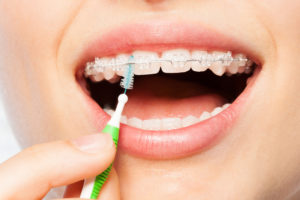
Avoid Actions that Hurt Your Teeth
Follow our guidelines for foods to avoid and what to do if you want to eat those foods. Take meticulous care of your teeth during your time with braces and you will thank yourself for the beautiful smile you’ll have when you get those braces off. If you have questions about foods or other topics that we haven’t covered, call Belmar Orthodontics at (303) 225-9016 for all of your questions!
What are Palatal Expanders?

Palatal expanders—usually worn by preteens—are commonly used to widen the jawbone and help treat certain orthodontic conditions. Expanders help prevent tooth extraction and can sometimes shorten the time needed for orthodontic treatment. Expanders may sound extreme, but arch expansion is one of the most common ways to eliminate crowding and crossbites in growing patients. While adapting to a palatal expander usually takes a day or two, it may take up to two weeks. Learn all about palatal expanders and how they can help your orthodontic care!
Infant Teeth Vs. Adult Teeth
A child’s mouth is not like an adult’s mouth. An infant will begin to get their teeth between 6-12 months. They will have the bottom two front teeth come in first, followed by the upper two front teeth and so on towards the back of the mouth. These teeth will be spaced out more than the adult teeth and there will only be 20 instead of 32 like an adult has. The spaces will allow growing room in your mouth for the permanent teeth to come in once your child is old enough to get them.
Between the ages of 6 and 13, your child’s baby teeth will begin to fall out in order to make way for the adult, permanent teeth. This is an exciting time, as your child is beginning to grow into a teenager, where they will have adult teeth. This childhood time of growing is the easiest time to fix bite and alignment problems.
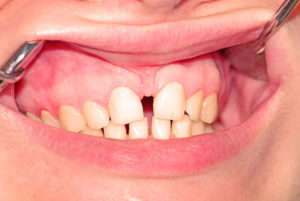
Child Orthodontics
We not only do orthodontic treatment for adults, but also for children. The American Association of Orthodontics recommends that children have their first orthodontic visit between the ages of 7 and 8. Having an examination early-on helps prevent the progression of orthodontic issues that can become severe as your child ages. We mostly look for proper bite and teeth alignment, but we also make sure that there is enough room in your child’s mouth for the adult teeth to come in properly.
If we find that your child’s bite is not aligned, we will fit them for braces. This will bring their bite back into proper alignment, thus reducing the risk of crooked and broken teeth, speech impediments, problems eating and chewing, and problems with the adult teeth. We refer to this early orthodontic intervention as “child orthodontics”. Some patients have a small mouth with a small palate. A small palate can cause many health problems, which is why we have a service for palatal expanders.
What Are Palatal Expanders?
Some children’s jaw’s aren’t big enough for their incoming adult teeth. Sometimes, removing a tooth is the best option for a patient to make room for their adult teeth. However, we like to try palatal expanders first to make extra room in your mouth without removing a tooth. The palate of the mouth is the roof of the mouth above the tongue. That’s where palatal expanders are used. These are appliances that stretch parts of your mouth where bone and cartilage lie so that more room grows in your mouth. Palatal expanders are generally used if there is enough bone and gum tissue around the teeth. If not, a tooth is removed instead. There is an upper and lower jaw palatal expander, which do the following:
- Upper Jaw Palatal Expanders – An expander in the upper jaw of the mouth seeks to stretch the bone and cartilage of your palate. Expanding this area will grow and stretch a child’s arch so there is room for all the adult teeth. Making this extra room through natural stretching will prevent crowding of the teeth as well as cross bite problems in children. Palatal expanders in the upper jaw are actual appliances we stick in your mouth to stretch this area. We attach the expanders to your back molars with metal rings. In some patients, the attachments are removable. As a child’s mouth expands, you may notice a gap starting to form between the two front teeth. This is normal and their appliance is in for several weeks or months.
- Lower Jaw Palatal Expanders – This type of expander will simply moves the teeth if they are tipped inward instead of straight up.
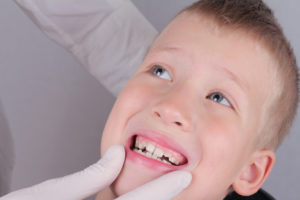
Additional Appliances
There are also other devices we use in certain cases when it comes to orthodontic care. Some patients will need TADs to help shift their teeth into a straighter position. These are “Temporary Anchorage Devices” that are mini titanium screws. These are sometimes referred to as “mini-implants” or “micro-implants”. They are screws that provide a fixed object that is used to push, pull, lift or intrude teeth during the straightening process.
If you need tads, Dr. Hardy will carefully numb your gum tissue and jaw area before placing these tiny screws in your jawbone. With our local anesthesia, this procedure is completely painless and getting accustomed to your TADs only takes 1-2 days total. These anchorage mini screws will help your orthodontic treatment be faster.
A Straighter Smile for You
Dr. Hardy will evaluate your teeth to determine if palatal expanders, TADs and other appliances are needed for your teeth. Palatal expanders are needed before you receive braces and TADs are used during your time with braces. Palatal expanders is one step closer to a beautiful smile for our patients. If you want to know more or are ready to get braces, call Belmar Orthodontics today at (303) 225-9016!
How Important Is it to Wear Your Orthodontic Rubber Bands?
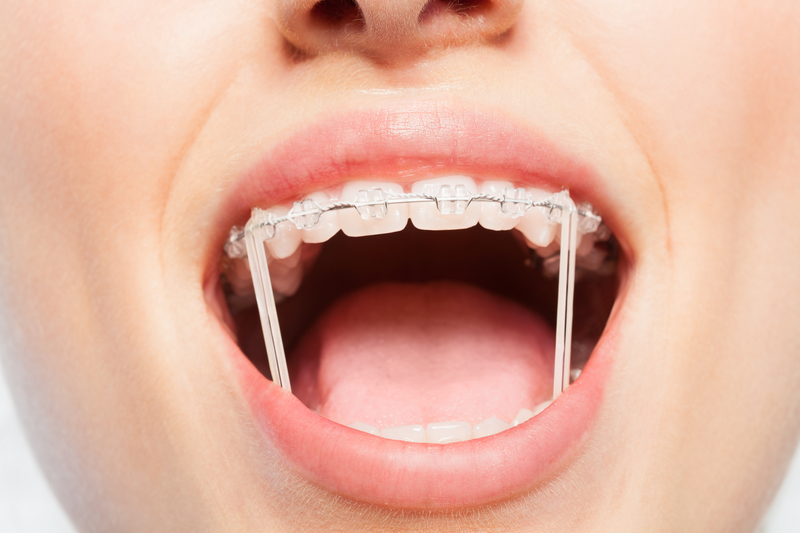
Wearing rubber bands is a critical part of your orthodontic treatment. We ask you to wear them 24 hours a day because they are that critical to the process of straightening your teeth. Knowing why your orthodontic rubber bands are important will help you wear them more. Consider the following reasons you need to wear your bands the next time you are tempted to put them aside.
Types of Braces
We offer several different types of braces at our office. Patients wear orthodontic rubber bands when they have traditional metal braces and ceramic braces. When you think of braces, you probably think of metal braces. These are the ones with square brackets on the front of each tooth and a wire that goes through the brackets on top and bottom. Metal braces are the most economical choice when choosing orthodontic care.
A close cousin to metal braces are clear, ceramic braces. These braces look and act like metal braces, except they are white. They have a white color to them because they are made out of ceramic material, which blends into the natural whiteness of your teeth. This is why they are known as “clear braces”. Ceramic material helps decrease demineralization that can happen when patients wear braces and don’t practice good oral hygiene habits. Both types of braces (metal and ceramic) use orthodontic rubber bands at times to move the teeth in a particular direction.
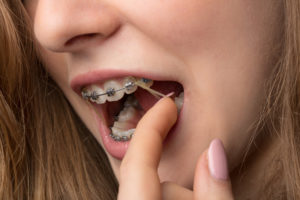
Parts of Braces
Each part of your braces is important when it comes to straightening your teeth in the best way possible in the quickest way possible. Your treatment would be lacking if you were missing any part of your braces, including orthodontic rubber bands.
- Bands – A band is a thin ring fitted to a back molar and cemented to the molar. This is usually made of stainless steel and secures other orthodontic attachments such as hooks, brackets or tubes.
- Brackets – A bracket can be bonded to the tooth with cement or it can be attached to a band. Brackets are usually made of stainless steel or clear ceramic material. They guide and support the archwire into its proper placement.
- Archwire – The archwire guides the shifting of the teeth during orthodontic treatment. Orthodontic attachments (such as the brackets) hold these wires and are made from stainless steel. Some archwires are made of titanium instead of stainless steel.
- Elastic Ties – Available in a variety of colors, elastic ties are small rubber bands that go over the brackets in order to hold the archwire in place.
- Springs – We open or close a space between teeth using the force of a small spring. These springs go between brackets and around the archwire, and are made of stainless steel or titanium.
- Orthodontic Rubber Bands
Orthodontic Rubber Bands
There are several different types of bands for braces. There are orthodontic rubber bands and there are ligatures. Ligatures are the small rubber bands that wrap around the brackets and hold the archwire in place. You will see these bands on children in a variety of colors. We switch out ligatures at every orthodontic appointment and children can mix and match the colors. They go around the brackets and protect the teeth and gums from sharp metal points and are changed when the wire is tightened or the braces are adjusted. These orthodontic rubber bands (the ligatures) are very small, as the brackets are small.
The other type of orthodontic rubber bands adjust your bite and jaw position. These will be slightly bigger orthodontic rubber bands. On your brackets, you have small hooks where these rubber bands attach. Often, you will loop a rubber band around a hook on a bracket on the lower jaw and hook it around another bracket on the upper jaw. Some patients will need several orthodontic rubber bands at a time and others will only need one. These rubber bands will adjust the position of the jaw quicker between visits.

Child Orthodontics
You will commonly see orthodontic rubber bands with child orthodontics. This is orthodontics for children under the age of 10 that need braces to correct bite and alignment issues. Orthodontic rubber bands are critical for making those changes possible. Your child should first see the orthodontist around age 7 or 8. This is a time where we can check that the bite lines up properly and that the adult teeth will come in correctly. If there is a bite or alignment problem, we give your child metal or clear braces to correct that problem. Your child will use orthodontic rubber bands throughout their treatment to provide sufficient force to bring the bite into a straight position.
Although small, orthodontic rubber bands are critical for moving the teeth. With orthodontic care, the teeth shift slowly over time. If you skip wearing these bands, your time with braces will be longer and you won’t be correcting bite and alignment problems. This is why we ask our patients to wear their orthodontic rubber bands 24 hours a day. Each part of your braces is important for creating that beautiful, straight smile you’ve always wanted. To learn more about orthodontic rubber bands or other parts of your braces, call Belmar Orthodontics today at (303) 225-9016!
5 Advantages of Invisalign Treatment
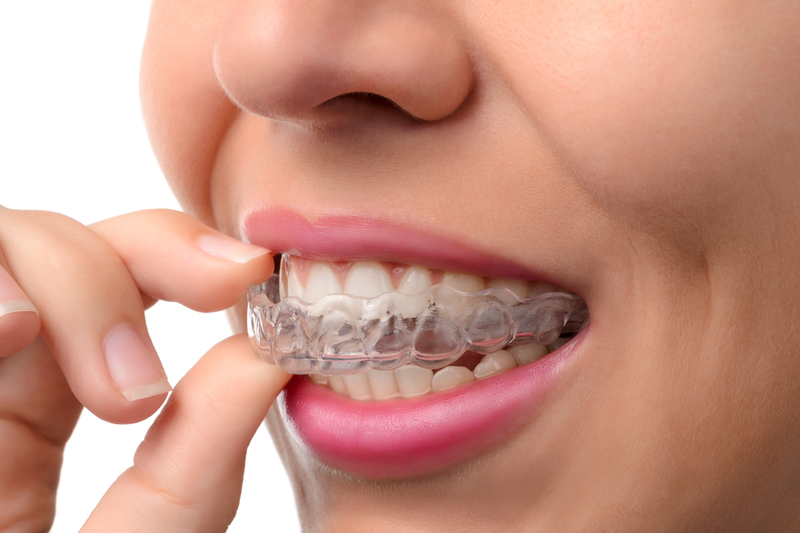
Are you thinking about straightening your teeth? A straighter smile through Invisalign treatment or other orthodontic options will set you on a path to more confidence and success. Lakewood Invisalign treatment not only works to improve your smile, but it also comes with amazing advantages over traditional braces. Not only is invisalign treatment virtually invisible on your teeth, but the aligners are easy to remove and work well with your lifestyle. Read on for more advantages of Invisalign treatment!
Invisalign and Invisalign Teen
You may have heard of Invisalign treatment before. This type of orthodontic treatment has been around for about 20 years, but has continually gained popularity—especially among adults and teenagers. We offer an alternative to traditional metal braces that can discreetly straighten your teeth while improving the functionality of your smile. Invisalign does all this without anyone knowing that you are even straightening your teeth!
Invisalign is a series of transparent aligners that gently move your teeth into a straighter position. You meet with us for an Invisalign consultation and we are able to take digital images of your teeth. With these, we make a model of your mouth and plan out a trajectory of your straightening treatment. Based off of your mouth, we design transparent aligners that will be switched out every 1-2 weeks. You wear these aligners throughout the day and night to move your teeth into that beautiful straight smile you’ve always wanted. They can even correct bite and malocclusion problems.
Advantages of Invisalign
There are many advantages to Invisalign treatment, which is why our patients love this option!
- It’s designed to be virtually unnoticeable on your teeth. The aligners are clear and fit snug to your teeth, meaning no one will know you’re wearing them.
- The aligners can easily be removed during eating, drinking, flossing and brushing. You can’t do that with any other braces option, as all the other options are cemented to your teeth. Being able to remove the aligners makes it so you have freedom with your treatment, especially if you need to remove the appliance to play sports.
- Less office visits are typically needed compared to traditional braces. You only need to come into the office every 4-6 weeks at a time.
- Teeth are easier to clean for optimum oral health during treatment. You simply remove the aligners at night, clean them, and clean your teeth as you normally would. Flossing is quick and easy, as are brushing your teeth. Traditional braces take much longer to clean.
- Total time for optimal results is usually shorter than metal braces treatment. If you need only slight orthodontic correction, you won’t need Invisalign treatment for very long.
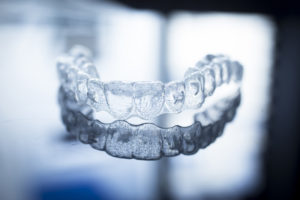
How Do the Other Options Compare?
There are various types of orthodontic options out there besides Invisalign treatment. Traditional metal braces are the most common orthodontic appliances because they are the cheapest option for straightening your teeth. These appliances involve very visible metal brackets attached to the center of each tooth with a metal archwire that passes through the brackets on top and bottom. Lingual braces are also metal braces, but they are attached to the back of your teeth. Clear braces are a very close cousin to metal braces, as they are built the same, but out of ceramic material that is white like your teeth. All options will straighten your teeth very well, but Invisalign is the most invisible option you can have. This is why adults and teens alike love Invisalign treatment so much.
You can use Invisalign treatment for simple straightening cases or complex bite and malocclusion cases. It’s invisible and you can see how your teeth move at every stage of your treatment. You can’t do that as clearly with other types of braces, but must wait until the end of treatment to see your smile. Studies also suggest that teens who do Invisalign treatment (as compared to other orthodontic methods) are 2 times more likely to have a boost in their self esteem. Who wouldn’t want that?
Your Experience with Clear Aligners
We believe that smiles are meant to be shared. However, many people with braces shy away from smiling because of the metal in their mouth. This is common with traditional metal braces, especially with adults. However, a straighter smile can do wonders for your professional and social life. Studies show that a straighter, more beautiful smile can make you more attractive to others. An amazing smile not only boosts your confidence, but can make you more successful because you feel more confident. You’ll smile more, drawing others to you and you will even be happier.
Invisalign has conducted their own research about straighter smiles and what they do for you. After orthodontic treatment, a person with a straighter smile has a leg up on their competition when it comes to landing a job. Employers are more likely to employ someone with a straighter, healthier smile because it makes them appear healthier and successful. People perceive people with straighter teeth as 58% more likely to be wealthy, 45% more successful, 47% more likely to be healthy and 38% smarter. 73% of people are also more likely to trust someone with straight teeth over someone who has crooked teeth.
Your Invisalign Treatment
If you want a straighter smile, don’t wait to get it! With the clear, removable aligners that Invisalign uses, Dr. Hardy can help you gradually move your teeth into their proper position. He can also correct malocclusion (bites that don’t close correctly), without the discomfort and presence of metal braces. When you select Invisalign to correct your smile, no one else has to know! To learn more about this braces option, call Belmar Orthodontics today at (303) 225-9016!
Braces for Adults—Because A Beautiful Smile Is Ageless
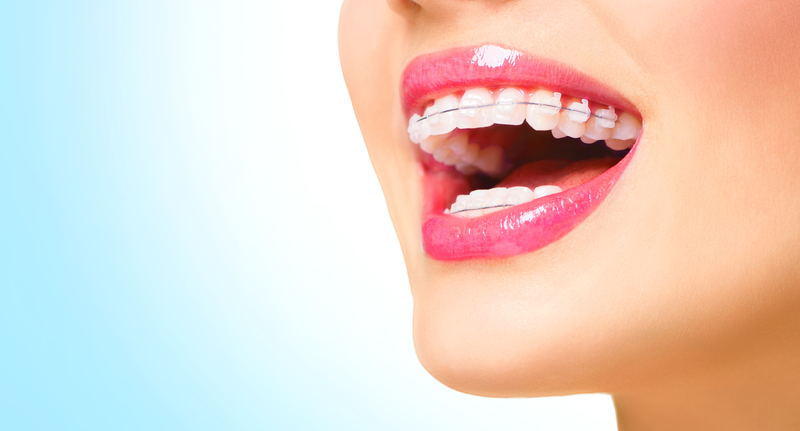
With advances in orthodontics in recent years, more and more adults are seeking out treatment for oral conditions they’ve lived with since childhood. Adults now comprise 50% of orthodontic patients—a major jump from previous decades. However, a beautiful smile knows no age limit. Today’s orthodontic patient has options for braces that they never had before. Learn your options for orthodontics as an adult and why you shouldn’t put off treatment just because you are an adult.
Braces Help Your Oral Health
Most people know that braces are for straightening your smile into something beautiful. Not everyone knows that braces can help improve your oral health significantly. If your teeth are crooked, they become much harder to brush, as teeth are at angles that make it difficult to reach every surface of your tooth. Flossing is even harder with crooked teeth. If you don’t properly clean away plaque that coats your tooth enamel, then you will most likely find yourself with some form of tooth decay or signs of gum disease. Cleaning your teeth also becomes a daily struggle, as you must clear away plaque every single day to avoid oral health issues.
Teeth that are straighter are much easier to clean and they take less time. The American Dental Association recommends brushing your teeth at least twice a day to remove plaque that erodes away your tooth enamel. Patients should also floss at least once a day. Those tasks are very easy to do when your teeth are straight and you can clean them in just a minute or two. Orthodontics is also great because an orthodontist has been to dental school and can direct you to a dentist if they notice oral health issues forming.
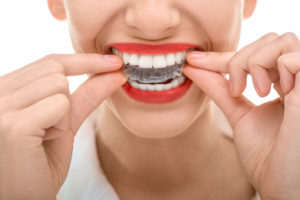
Correcting Bite and Alignment
Having proper bite and alignment is critical for speech. We treat children often for bite and alignment issues, as these are easily correctable when a person is young and the jaw is still forming. For child orthodontics, we take special care to ensure that the upper and lower jaws line up with one another properly. An incorrect alignment can put you at risk for broken teeth later on in life and can affect your ability to speak, eat, bite and chew correctly.
Although it is more difficult to do as an adult, we can perform orthodontic treatments that can correct bite and alignment issues. If you have had a speech impediment all your life due to bite or alignment issues, you can finally find a remedy through orthodontic straightening! For severe cases of bite and alignment issues as an adult, surgical orthodontics may be the best way to transform your smile.
Get Ahead Professionally
There are around 4.5 million Americans that receive orthodontic treatment via braces each year. 25% of those patients are adults. In fact, each year more and more adults find themselves with adult braces. Not only can orthodontic treatment help your oral health, but it can also help get you ahead professionally. Studies show that those who receive orthodontic treatment appear more confident, successful, trustworthy and attractive to their peers. People with straighter teeth are considered happier and healthier. They are also 38% more likely to be perceived as smart. Your teeth are one of the first facial features others notice. Make an impression that will wow others by straightening your teeth!

Your Treatment Options
Adults get the best deal when it comes to orthodontics: they have every option available to them! Children and teenagers are limited in their orthodontic options, but adults can choose what orthodontic treatment they want. You can choose traditional metal braces to straighten your teeth, ceramic braces, lingual braces or Invisalign treatment. Ceramic braces are similar to traditional metal braces, except that they are made from naturally-white ceramic material. Even the archwire can be made white like the brackets to blend in with the whiteness of your teeth.
Lingual braces are one of our most popular adult braces options. These are essential metal braces that are custom-made to fit the back of each of your teeth. We take impressions of your teeth and create a metal shell for your tooth-back complete with brackets and an archwire. Others won’t realize you have adult braces because this hidden apparatus lies on the tongue-side of your teeth.
For an even more discrete straightening option (which is a favorite among adults), you can invest your time in Invisalign. This is a series of transparent aligners that we custom-make for your teeth. Using digital technology, we can map out the trajectory of your teeth as they straighten and make aligners you can wear and switch out every 1-2 weeks. Adults love this option because they have the freedom to remove the aligners as they please. You can remove them for eating, sports activities, and cleaning your teeth as you normally do. This is an option that provides amazing freedom while undergoing adult braces treatment.
Receive Your Adult Braces today!
There are many benefits for receiving adult braces. You can improve your oral health and decrease your risk for tooth decay and gum disease. You can boost your confidence, correct bite and alignment, and exude success with a straighter smile. If you would love to have the benefits associated with adult braces, call Belmar Orthodontics today at (303) 225-9016 and we’ll find a treatment plan that’s right for you!
How to Choose a Good Orthodontist
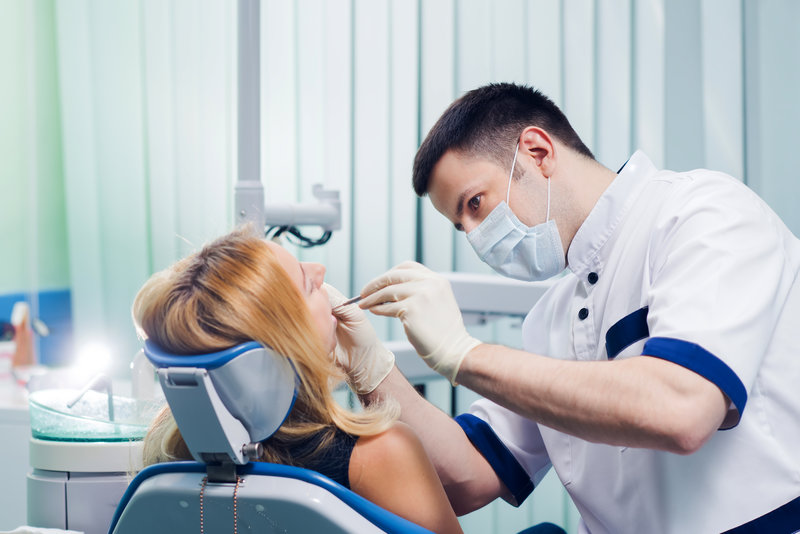
The American Dental Association recommends that your child have their first orthodontic visit between ages 7 and 8 to correct bite and alignment issues. Teenagers, as well, need to visit the orthodontist to correct the alignment of their permanent teeth. How do you know what orthodontist to go to? Choosing an orthodontist is a big decision, as it will determine the health of your teeth and the quality of care you receive. Orthodontists are different than regular dentists and must go through several years more of quality training. You want to look for an orthodontist that has this training. Finding one that can work with children as well as adults is also important. Learn about orthodontists, what constitutes a good one, and what factors you must consider when choosing one!
Choosing a Good Orthodontist
When you choose an orthodontist, you are choosing a person that has had extensive training and years of schooling to take care of your teeth. An orthodontist must complete 4 years of undergraduate training and then be accepted to a 4-year dental school. They then continue a 2-3 year doctorate training to work with patients to correct bite and alignment. Essentially orthodontists are specially-trained dentists that specialize in bite and alignment issues and straightening the teeth. These are services that can last a patient a lifetime. You want to only choose a speciallytrained orthodontist to work on your teeth. Never attempt to straighten your teeth on your own.
A good orthodontist must become certified by the American Board of Orthodontics. They do this through written and clinical exams and then they must recertify often to ensure that their orthodontic training is still at the highest level it needs to be. Another aspect about choosing a good orthodontist is choosing someone that truly cares about your needs and wants you to be as successful as possible. At Belmar Orthodontics, our success is dependent on your success. We try to keep our office up-to-date with the latest state-of-the-art treatment and services to transform your smile into something beautiful in the least amount of time.
Your Braces Options
A good orthodontist will be skilled in several methods of straightening your teeth. We are skilled to provide you more than just traditional metal braces. We also offer the following options for orthodontic care so you can truly choose how your want your straightening treatment to be:
- Incognito Lingual Braces – These are metal braces that are attached to the inside of each tooth. They straighten much light traditional metal brackets, but their hidden apparatus makes them especially appealing for adults and professionals.
- Invisalign – This is a series of transparent aligners that are custom-made for each patient and are changed every 1-2 weeks. This allows a patient to straighten their teeth virtually invisibly. Plus, the aligners are removable for cleaning, eating, sports and similar activities.
- Clear Ceramic Braces – These are braces that mimic metal braces but are made of ceramic material. Even the archwire can be made white like the brackets, helping both to blend into the teeth. Ceramic helps decrease demineralization.
- Retainers – The best way to keep your smile straight is to wear a custom-made retainer after treatment. We can customize retainer trays that you wear each night to keep those pearly whites straight. We can also provide you permanent retainer devices that are attached to the back of your front teeth.
Orthodontic Care for Children
Not all orthodontists work with children or know how to. However, child orthodontics is very important for the health of many children. Children should see an orthodontist between 7 and 8 years old. This is a critical time to correct bite and alignment issues that become severe later on in life. These problems cause speech impediments, problems eating, speaking, chewing and more. A good orthodontist will be one that works well with children and keeps the office environment inviting for them.
Do You Need a Dentist?
An orthodontist does many services to help the health of your teeth, however, they don’t do everything. They are trained just as a dentist is and they know the signs of tooth decay, gum disease and other oral health problems. However, their job is to do orthodontic care, not dental care. That is why they specialized in the field that they did. A good orthodontist will frequently see the signs of tooth decay or gum problems, and a good orthodontist will refer you to a trusted dentist to fix those problems. If you have a cavity or a dental emergency, a dentist is usually the person you want to see instead of an orthodontist.
A dentist received 4 years of training in an undergraduate program. Then, he or she went on to do 4 years of dental school. There they learned services such as the following:
- Comprehensive Exams
- Dental Cleanings
- Sedation Dentistry
- Laser Cavity Detection
- Proper Oral Hygiene
- Oral Cancer Screenings
- Digital X-rays
- Dental Sealants
- Periodontal Treatment
- Scaling & Root Planing
- Sleep Apnea Therapy
- Teeth Whitening
- Root Canal Therapy
- Tooth-Colored Fillings
- Same-Day Crowns/Dental Crowns
The majority of dentists also offer cosmetic dentistry options such as dental implants, cosmetic bonding, dental bridges, porcelain crowns and porcelain veneers. If you want to transform your smile beyond straightening your teeth and correcting bite and alignment, then you want to see a dentist instead of an orthodontist.
Schedule Your Consultation
In Lakewood Belmar Orthodontics orthodontist is a great step in the right direction, as it means you are conscious about your oral health. Orthodontic treatment is a wonderful way to correct a smile and to make it into something beautiful you can keep for life. Studies show that a straighter, more beautiful smile can make you more confident, and others will see you as such as well as more attractive, successful and trustworthy. Who wouldn’t want those things? If you would like to learn more about orthodontic treatment and schedule your free consultation, call Belmar Orthodontics today at (303) 225-9016!
Dentistry and Orthodontics Are Closely Related

Dentistry and orthodontics are quite different, but they are also closely related. You need care from both a dentist and an orthodontist in order to keep your smile healthy. Dentistry and orthodontics both deal with the health of your smile. One focuses on straightening the smile and other focuses on tooth decay, gum disease and treatments to help correct oral issues. Both involve services that “fix” problems with the teeth to help make your mouth healthier, thus making you healthier. Find out the difference between dentistry and orthodontics, the similarities, and how both can help you have the best smile possible.
What Dentists Do
Dentists go to school to specialize in problems involving the teeth, nerves, gums and jaw. They can provide any or all of the following services:
- Comprehensive exams and dental cleanings
- Oral cancer screenings
- Sedation dentistry
- Laser cavity detection and cavity detection using x-ray imaging
- Tooth extractions
- Laser tissue treatment
- Oral hygiene training
- Dental sealants
- Periodontal treatments on the gums
- Scaling and root planing for gum disease
Dentists are also trained in cosmetic dentistry and can provide services such as dental implants, porcelain veneers, porcelain crowns, cosmetic bonding, dental bridges and even botox treatment. Restorative dentistry involves root canals and root canal therapy, teeth-whitening services, tooth-colored fillings, and in some cases orthodontic care through Invisalign. The dentist is usually trained in orthodontics to provide this service. If a dentist finds that a patient has a problem with their bite or alignment, they will refer the patient to an orthodontist who is certified and trained to correct the issue.
What Orthodontists Do
Orthodontists must obtain several degrees to become orthodontists. They need more training than dentists do because they must be able to correct smiles as well as identify oral health issues. Orthodontists are specially trained with correcting bites, occlusion (or alignment), and in straightening the teeth. In a healthy mouth, the upper jaw rests on top of the lower jaw. The upper front teeth will rest slightly forward on top of the lower front teeth. Not all mouths are aligned correctly. Some bites that orthodontists correct include:
- Overbite – In the upper jaw, the front teeth rest over the lower front teeth instead of above. You never want the front teeth to overlap the bottom teeth completely, as this creates pain and other problems when biting, eating, and other everyday tasks.
- Underbite – This is the opposite of overbite. The lower front teeth rest far in front of the upper front teeth. This creates similar jaw problems as mentioned with overbite. Underbite can lead to jaw and joint pain, earaches, headaches. and more.
- Crossbite – Crossbite involves teeth that cross in all different directions. Some of the teeth are slanted toward the tongue. Other teeth are slanted towards the cheeks. This creates uneven pressure all over the mouth when biting and chewing, which can lead to broken or fractured teeth, weakened enamel, pain, and more. Crossbite can even cause abnormal facial development and jaw problems if left untreated.
- Openbite – Openbite refers to an opening (or gap) in the teeth between the upper and lower jaws when the mouth is closed. This gap is right at the front of the teeth and might even appear as a hole in a patient’s smile. Openbite leads to speech impediments, lisps and other problems with speaking if left untreated.
Dentistry and Orthodontics Compared
Did you know that an orthodontist has dental training? Orthodontists must obtain several degrees in order to work. They must obtain a Doctor of Dental Surgery (DDS) degree or a Doctor of Medical Dentistry (DMD) degree just as dentists do. Then, they must apply to an orthodontic graduate program to obtain a Masters of Science degree. Orthodontists go through all the same training as dentists and then some. This is how orthodontists can spot dental issues forming. Basically, all orthodontists are dentists but not all dentists are orthodontists.
If you have problems with your teeth, gums, oral nerves or jaw, then go see your dentist. Your dentist will refer you to an orthodontist if the issue is corrected by an orthodontist or has to do with bite, alignment or straightening. When it comes to problems such as tooth decay (cavities), both dentists and orthodontists can help you in some way. Orthodontic care via braces can help straighten the teeth, thus making them easier to clean and reducing your risk for tooth decay. Dentists can also help you prevent tooth decay with comprehensive exams, biannual cleanings and treatments that stop the progression of cavities if they have formed.
Benefit From Both
Both dentistry and orthodontics involve services that “fix” problems with the teeth to help make your mouth healthier, thus making you healthier. Both professions involve doctors who are highly trained to help problems with your oral health. Patients can benefit greatly from having both a dentist and an orthodontist. Take a step towards a healthier mouth, and schedule an appointment with Dr. Hardy today by calling Belmar Orthodontics at (303) 225-9016!
How Braces Improve Dental Health
Did you know that braces can improve your dental health? Dental and orthodontic care go hand-in-hand. Many dentists have training to spot problems with bite and alignment. These problems can be corrected with proper orthodontic care, and should be corrected early-on before children have grown. Receiving braces as a child can correct problems that become severe later in life. Receiving braces as an adolescent and even as an adult can greatly improve your oral health, as it decreases your chances for tooth decay and even gum disease. Straighter teeth are teeth that are easier to clean and easier to take care of. Learn how investing in braces can improve your dental health today!
Braces Improve Dental Health
DId you know that orthodontists also attend dental school? Orthodontists go through 4 years of undergraduate school, then move on to 4 years of dental school. Afterwards, they must complete and additional 2-3 years of special training to perform orthodontics. Orthodontists are skilled at not only making your teeth straighter, but also helping you to improve your dental health. Dr. Hardy understands how the teeth work and that straighter teeth are teeth that have a reduced risk for cavities and problems with gum disease.
When the teeth are crooked, it can make it much harder to clean between each tooth thoroughly each day. To keep a healthy mouth, every single day counts and plaque must be removed with frequent brushing and flossing. What if the crookedness of the teeth prevent your toothbrush or floss from reaching certain areas? Those areas will be prone to, and will probably start to develop, tooth decay and/or problems with the gums. In contrast, when the teeth have been properly aligned with orthodontic care, cleaning them becomes a simple task. A toothbrush can easily reach all the surfaces and floss can get in between each tooth. That gives you a much better chance at having great oral health.
What Else Can Braces Do?
Braces are highly beneficial for not only straightening your pearly whites, but also for correcting bite and alignment problems that so many children have. Between the ages of 7 and 8, a child should see an orthodontist and get their bite assessed. We look to see if your bite and teeth line up correctly. If they don’t, you may have one of the following: openbite, crossbite, overbite, underbite, malocclusion, etc. All of these problems can make chewing, speaking, biting, etc., difficult. If a smile is left untreated, problems that were minor become severe over time and require more extensive procedures. However, braces are a perfect method for fixing these problems at an early age, saving you time, money and your health.
Common Oral Health Problems
We mentioned that braces can help your dental health by lowering your risk for oral health issues. The two most common oral health problems are tooth decay and gum disease. You may know tooth decay by one of its other names: dental caries or cavities. Tooth decay is the erosion of the tooth enamel over time. Almost every patient has had some form of tooth decay in their life. However, tooth decay–or cavities–are 100% preventable if you have a habit of taking care of your teeth.
Tooth decay is caused by plaque—a sticky film made from sugars in the foods you eat mixed with bacteria. This plaque sits on the teeth and erodes the tooth enamel. Over time, that plaque can eventually weaken a tooth and get inside, where it will start to cause decay. The teeth aren’t the only ones that are affected by plaque. Plaque also attacks the gums, causing them to become swollen, red, and irritated. You may even see your gums bleed easier. When the gums continue to become inflamed, they will eventually recede from the teeth, causing the teeth to fall out. Thankfully, both tooth decay and gum disease are avoidable. Straighter teeth can help make brushing easier, and thus help decrease your chances for either condition.
Your Dental Health
When it comes to the teeth, you only have one set. You want to do all you can to keep your dental health intact. Straightening your teeth with braces can help you, plus, you’ll receive all the benefits a better smile can give you. So what are you waiting for? Schedule your appointment with Belmar Orthodontics today at (303) 225-9016!
Get Your Braces in Time for Back-to-School

School is just around the corner and it’s time to prepare your peers for your beautiful smile. Braces not only help straighten your teeth, but they can also improve your speech, your appearance and–most importantly–your confidence! New technology gives you more options for adding a little fashion flare to your smile or straightening your teeth discreetly. Learn about all of your amazing options for braces today.
Back-To-School Success
Summer is almost over and it’s back to school time. Is your smile ready? A lot can happen over the summer and each year brings new exciting changes. Getting a straighter, more beautiful smile is something you don’t want to be without as a new year starts off. Did you know that kids with straighter teeth tend to feel more confident in school and around their peers? That confidence can help them get better grades, make more friends, and be more willing to try new opportunities. Every child and teenager alike wants to shine in their own way. You can do that and receive more confidence by getting your braces just in time for school.
In the past, many adolescents saw braces as embarrassing or unattractive. However, studies show that children and teens are receiving braces in much larger numbers than they did in the past. Now, instead of being embarrassing, braces are seen as a luxury for many families and individuals. In times of recession, families even go without necessities to make sure their children receive braces. Braces truly are worth having because of how beneficial they are for boosting self-esteem, confidence and how you’re perceived socially. Investing in them is a great way to help a child as they start off school once more.
Options for Your Braces
We love providing options for our patients at Belmar Orthodontics! Our most popular option for braces for children and teens alike are our traditional metal braces. However, there are other options we provide as well:
- Traditional Metal Braces – This is our most economical option. Our patients love the colorful bands that they can customize their braces with. Each patient can choose a certain color they love every appointment or even do a rainbow of color if they so choose.
- Incognito Lingual Braces – This option is very similar to traditional metal braces, however the braces are worn on the tongue-side of your teeth. We make an impression of your teeth and then custom-make braces that fit the inside of your teeth perfectly. You can straighten your teeth with the perfect hidden apparatus.
- Clear Ceramic Braces – We can provide ceramic braces for our patients. These braces are similar to traditional metal braces, but they are made from ceramic material. The braces blend in with your teeth perfectly as the brackets and even the wires can be made white. Ceramic braces can also decrease demineralization that can happen with metal sometimes.
- Invisalign Teen – This is a version of Invisalign transparent aligners designed with the needs of teenagers in mind. These custom-fit aligners can correct smiles and unevenly-spaced teeth while allowing patients to continue eating, drinking, and cleaning their teeth with ease.
Cleaning At Home
Your braces are something new and exciting. However, they must have proper care to truly work wonders. Brush and floss your teeth often. We recommend brushing and flossing at least twice daily. However, with braces you may want to brush the teeth more than twice a day. After each meal would be best, as food can become trapped in the brackets very easily, where it will then sit on the teeth. Plaque is a sticky, acidic substance that you want to avoid. Plaque is made from the sugars in the food you eat that mix with the bacteria in your mouth. When food is left on the teeth, that plaque can form and begin to erode your teeth.
Not brushing and flossing enough can cause erosion and demineralization that will be obvious once the braces come off. Use special flossers to get in between the teeth sufficiently. Take care of your teeth so that your smile is beautiful and straight without blemishes when your braces come off!
Tips for Success At School
Your braces are easier to manage when you’re prepared. At school, take a mouthguard with you to gym class. You can get injured with braces when playing sports, especially contact sports. A mouthguard will help protect you and your mouth from injury. Be careful what you eat as well. Some foods can damage or break your braces and other foods can get tremendously stuck in the brackets. Some foods to avoid are anything hard, gooey, crunchy or sticky. This includes food items such as gummy bears, fruit snacks, hard candies, chips of any kind, hard vegetables, and nuts. If you really want a food (such as hard fruits and veggies), make sure to cut them up into bite-size pieces. Biting into foods can lodge them into the braces, so be careful with this.
We also have braces kits you can have or tips to make one yourself. Take a kit with you to school that has the cleaning essentials you need: mirror, toothbrush, toothpaste, floss and flossers, wax for pokey wires, etc. If you need a quick cleaning or a quick fix for a wire, you’ll be set!
Your Free Consultation
There never was a better time to straighten your smile! Braces can provide your child the boost of confidence they need to start of the school year right. If you want to schedule your child’s appointment, call our Belmar Orthodontics office today at (303) 225-9016!


